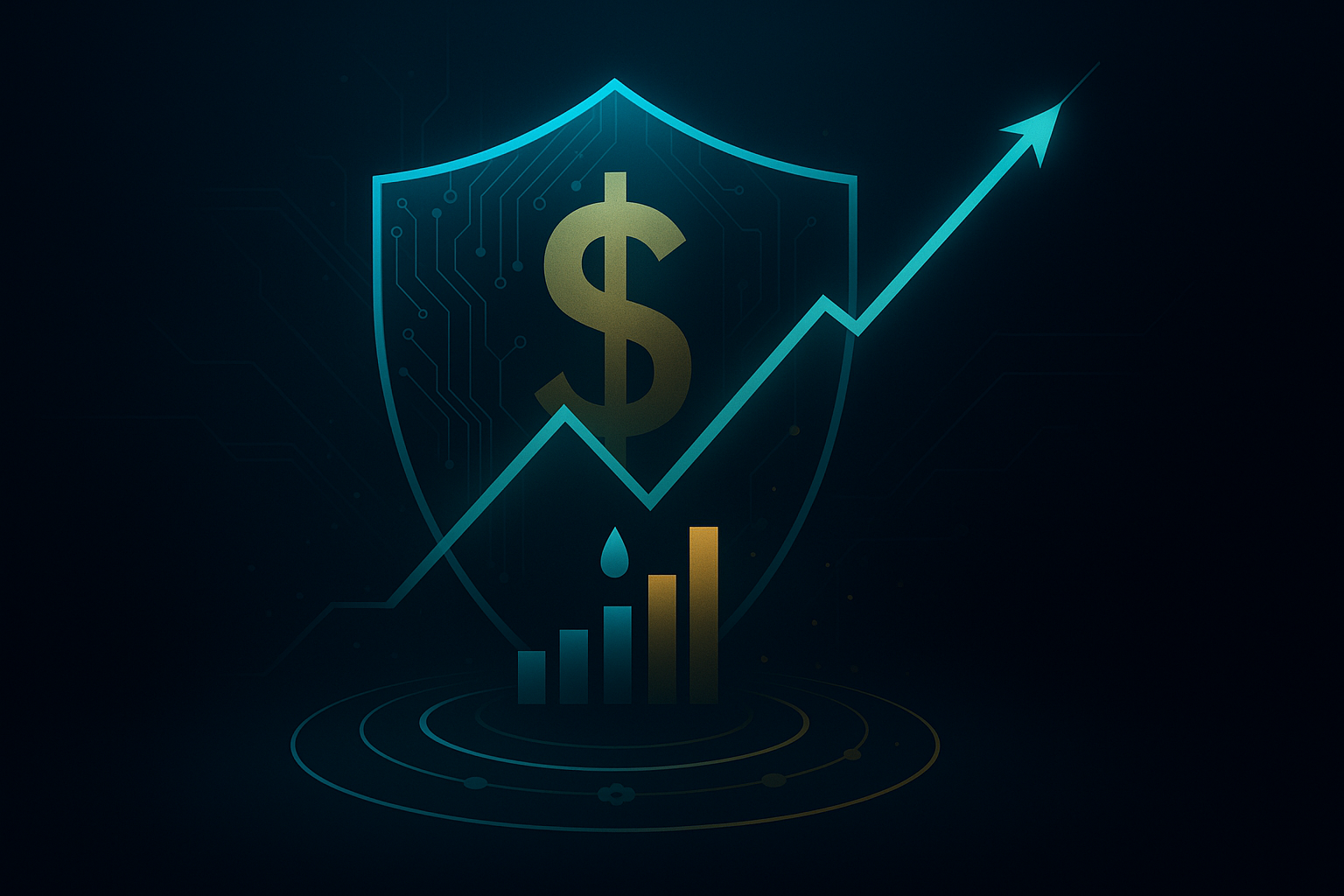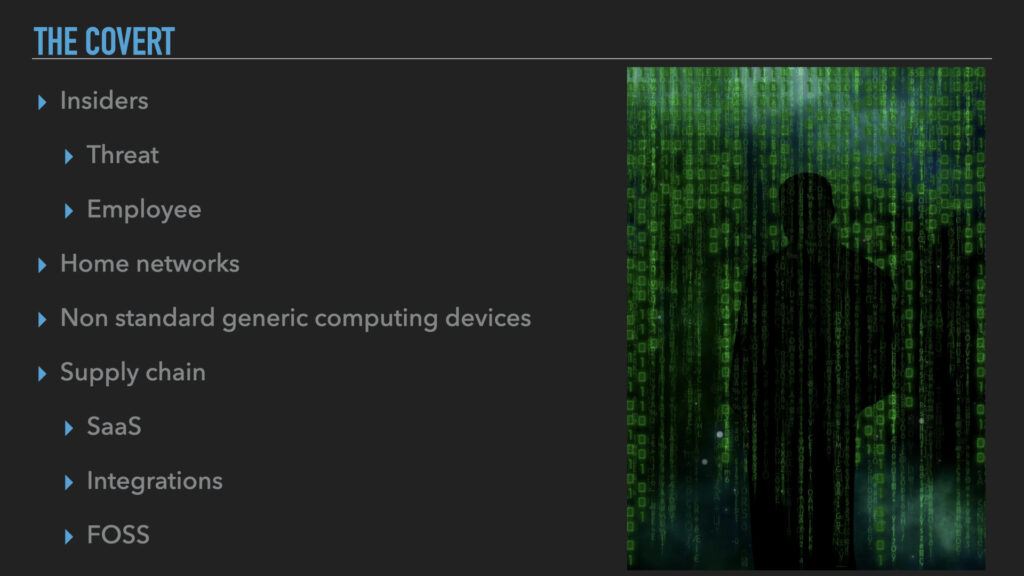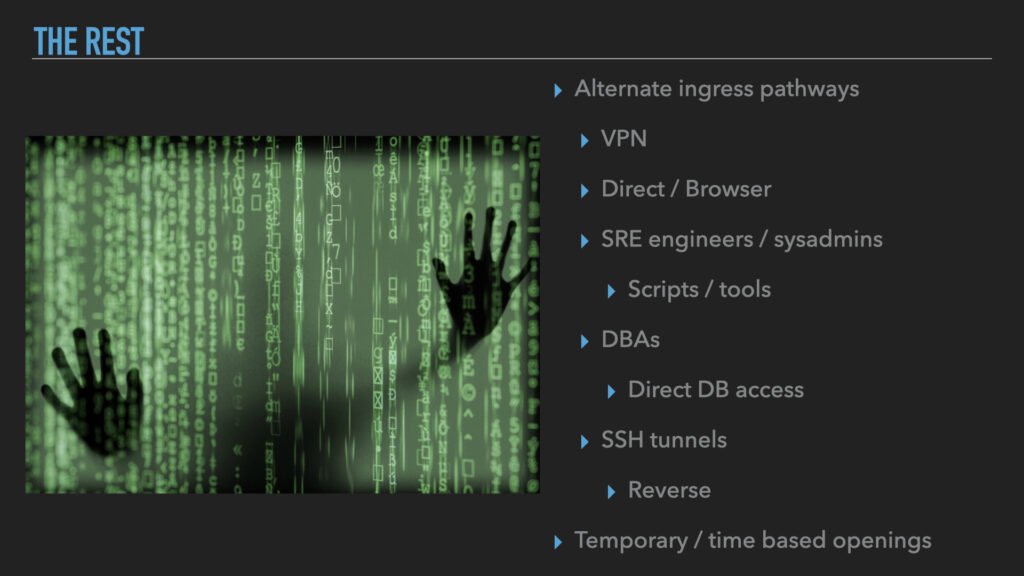
Organizational leaders must manage risk and have to factor in various areas of risk. Cybersecurity risk has risen to a ranking worthy of the attention of business leaders, generally speaking the C-Suite and members of the Board of Directors (BoD). Chief Information Security Officers (CISOs) and their teams are responsible for informing said business leadership about cybersecurity risk to the organization at hand. All of that is basic knowledge at this stage. CISOs need to focus on profit signals, not security static.
This seems like a relatively simple relationship with two sides to it. One one side there are those business leaders. On the other are cybersecurity leaders. Both sides are concerned with risk. But both sides don’t focus on, and interpret, risk the same way. This is where the situation is no longer basic.
The Situation
For a given area of risk, CISOs often analyze the type and try to figure out ways to manage that area of risk. The type and severity matter and they build platforms and risk registers to perform functions such as organizing the relevant data and exercising prioritization on that data. The focus however is generally on the risk itself, in the abstract.
Most business leaders don’t care about risk in the abstract. They care about the financial impact if some risk gets actualized (if it actually happens). Their concern is impact by way of these types of questions:
- How much Annual Recurring Revenue (ARR) is at stake?
- How will a severe event impact the company’s cash?
- What does this risk mean for Earnings Before Interest, Taxes, Depreciation, and Amortization (EBITDA)?
Traditional cybersecurity metrics like vulnerability management statistics, Mean Time to Detect (MTTD) and Mean Time to Respond (MTTR) describe activity, not business outcomes. CISOs must shift the conversation to be recognized as business leaders. For example, quantify how security protects revenue continuity. Show how security accelerates growth, preserves liquidity, and improves margins.
There are no formulas in terms of what metrics will resonate with a particular business leader, or group of leaders. Ultimately, the best metrics are those which make sense, and add value, to a specific audience. Given that, the following example metrics are provided in good faith and intended to inspire thought in this arena. They are designed for revenue-centric cybersecurity leaders in order to generate interest with business leaders. Each example comes with a clear definition, sections like ‘why it matters’ and ‘how to compute’, and practical examples.
Metrics Examples
These examples are grouped by business outcomes:
- Revenue Continuity
- Cash and Liquidity
- Growth Velocity
- Margin
Percentiles primer:
- p50 is the median of the actual loss distribution. This means there is a 50% probability that the actual loss will be greater than the p50 value and a 50% probability that it will be lower.
- p95, or the 95th percentile, is a statistical measure indicating that 95% of a set of values are less than or equal to that specific value. The remaining 5% will be higher.
Revenue Continuity
This area focuses on keeping booked revenue deliverable and renewable despite security friction. Emphasize leading indicators such as the reliability of verified recovery processes. Trend typical performance and worst-case exposure so directors see both the steady state and the possibilities if things turn negative. Define thresholds that trigger remediation or some other activity to manage risk, and make business continuity a shared objective between the CISO and Revenue/Sales Operations. For example, security teams can show what percentage of ARR their controls protect.
Protected ARR
- How it is represented – percentage.
- Why it matters – shows how much revenue is insulated from outages/breaches.
- How to compute – (ARR delivered by systems operated within an ecosystem of strong resilience ÷ total ARR) × 100.
- Strong resilience can include:
- Tested Disaster Recovery (DR) to Recovery Time Objective (RTO)/Recovery Point Objective (RPO)
- Strong authentication and/or Multi-Factor Authentication (MFA) on customer facing and/or revenue-centric flows
- Vendor assurances
- Distributed Denial of Service (DDoS) protection
- Strong resilience can include:
- Example:
- Total ARR – $200M.
- Subscriptions ($120M) + MFA based Platform ($40M) – pass.
- Legacy app ($40M) that cannot support MFA – fails.
- Protected ARR = 80% or (160/200) X 100.
- In plain English – this percentage represents the share of annual recurring revenue that’s safely insulated from outages or breaches because it runs on resilient, well-governed systems.
Cash and Liquidity
This section demonstrates the organization’s ability to withstand a severe disruption without jeopardizing cash. Quantify peak cash needs under stress by modeling downtime, restoration, legal/forensic work, business interruption, and insurance deductibles/exclusions. Show both expected impact and a tail event (a low-probability, high-impact loss scenario that lives in the extreme “tail” of your risk distribution) so that leadership and/or the board understands ceilings. Pair this with quarterly tabletops and pre-approved financing levers (credit facilities, insurance endorsements, indemnities) co-owned by the CISO and CFO to avoid emergency dilution and keep liquidity intact.
Ransomware Liquidity Impact
- How it is represented – dollar amount with relevant impact time frame.
- Why it matters – quantifies cash impact so that cash reserves are factored into plans.
- How to compute:
- (ransom cost + downtime cost + recovery cost + legal/forensics costs) – realistic insurance recovery amount at p95
- Link dollar amount to estimated impacted “days of operating expense”
- Example: $13M ≈ 12 days of operating expenses.
- Ransom cost – $20M.
- Downtime cost – $5M.
- Recovery cost – $3M.
- Insurance recovery ~$15M.
- Estimated net cash hit – $13M or (20 + 5 + 3) – 15.
- Estimation of 12 days of operating expenses (subjective to the organization).
- In plain English – this metric represents the cash you would need on hand for a severe ransomware event, expressed as a dollar amount and translated into “days of operating expense” (how many days of normal operating spend that amount equals) so you can tell if reserves are adequate.
Growth Velocity
This section revolves around trust signals and how they facilitate enterprise sales. Explain how being “procurement-ready” up front (e.g., proofs, attestations, control evidence) removes friction from security reviews, shortens sales cycles, and improves conversion. Tie readiness to deal-desk gates (no deal without required proofs), add advance alerts for expiring artifacts, and segment by region or vertical to target subjective bottlenecks. A possible addition is to report changes in deal win rates and days-to-close alongside readiness so security’s growth impact is unmistakable.
Trust Attestation Coverage
- How it is represented – percentage and dollar amount tied to upcoming expirations (time bound).
- Why it matters – establishes range of coverage and can unlock insights into renewals that have attached requirements. This can also identify areas where requirements are not being met.
- How to compute:
- (ARR requiring attestations with current reports ÷ ARR requiring attestations) × 100;
- Flag expiring attestations and ARR at risk in some time bound period.
- Example: 80% currently covered; $15M ARR tied to attestations expiring within 90 days.
- ARR requiring attestations – $200M.
- ARR covered by current attestations – $160M.
- 80% = (160/200) X 100.
- Of the remaining $40M, $15M is tied to attestations/reports that expire within the next 90 days.
- In plain English – this metric represents the share of revenue that already has the required security/compliance proofs (e.g., SOC 2, ISO 27001) in place, plus a look-ahead of dollars at risk from proofs expiring soon.
Margin
This section intends to connect strong data governance to healthier unit economics. Show coverage of sensitive records under enforceable controls and quantify residual exposure where coverage is missing. As governance coverage improves, incidents shrink, reviews streamline, and support and compliance costs fall, leading to lifts in gross margins.
Customer Data Coverage
- How it is represented – percentage and dollar amount of exposure.
- Why it matters – reduces breach cost (fines, legal, response) and can protect renewals, which can in turn improve EBITDA. This can also directly improve customer confidence.
- How to compute:
- From Data Security Posture Management (DSPM) inventory – percentage of sensitive data (e.g., Personally Identifiable Information (PII), etc) stored with native encryption in place.
- Native encryption means record or column level encryption, not at a volume or disk storage level.
- Uncovered records × assumed $/record for exposure modeling.
- From Data Security Posture Management (DSPM) inventory – percentage of sensitive data (e.g., Personally Identifiable Information (PII), etc) stored with native encryption in place.
- Example: 85% coverage, $37.5M exposure.
- DSPM inventory (total number of records discovered) – 1,666,666.
- Shows that 85% of records are covered by native encryption.
- 15% uncovered = ~250,000 records.
- At $150.00/record (150 × 250,000) = ~$37.5M exposure.
- DSPM inventory (total number of records discovered) – 1,666,666.
- In plain English – this metric represents the percent of sensitive records protected by native, record/column-level encryption, reported alongside a dollar estimate of what’s not protected. Higher coverage lowers breach costs, protects renewals, and boosts customer confidence.
Recommendations
- Start with baselines for the current state.
- Compute metrics such as Protected ARR, Ransomware Liquidity Impact, Trust Attestation Coverage, and Customer Data Coverage.
- Using those baselines, set 12‑month targets.
- Assign executive owners per metric with reviews at a regular cadence.
- Example: CISO/Chief Finance Officer (CFO) co‑ownership for liquidity.
- Integrate metrics into gates.
- Block product/software launches lacking required control tests and/or attestations.
- Tie Attestation Coverage to enterprise pipeline forecasting.
- Flag expirations 90 days ahead with ARR at risk.
- Use DSPM to uncover areas that can be addressed to create a raise in Customer Data Coverage.
- Track uncovered records × $/record to quantify exposure.
- Make finance your data partner.
- Reconcile assumptions (credit issuance rates, loss per record, downtime cost) at regular intervals.
- Incentivize security driven financial outcomes.
- Push for leadership bonuses to be linked to movement in Protected ARR, reduced cash‑at‑risk, and revenue protection.
Conclusion
Cybersecurity only earns durable credibility with board members when it speaks the language of money. Shift the center of gravity from activity counts to financial outcomes. Treat things like “Protected ARR”, “Ransomware Liquidity Impact”, “Trust Attestation Coverage”, and the “Customer Data Coverage” as headline metrics. Show trends so leaders can reason about typical loss and tail risk. The result becomes a shared decision frame with your C-Level peers and/or board directors. This equates to less debate over technical minutiae, more alignment on where to invest, what to defer, and what risk to carry.
Execution is where credibility compounds for cybersecurity leadership. Assign metric owners, set board-visible thresholds, and wire these measures into operating rhythms:
- Quarterly planning
- Deal-desk approvals
- Release gates
- Disaster Recovery exercises
- Renewal risk reviews.
Close every discussion with a clear “security metric leads to money” translation, for example:
- Protected ARR leads to fewer credits/lost transactions.
- Trust Attestation Coverage leads to faster enterprise sales or new opportunities in a pipeline.
When security is measured in dollars protected, cash preserved, and/or margin improved, it stops being a cost center and becomes an instrument of business growth. Focusing on profit signals, not security static positions a CISO to be perceived as a partner by business leaders.








